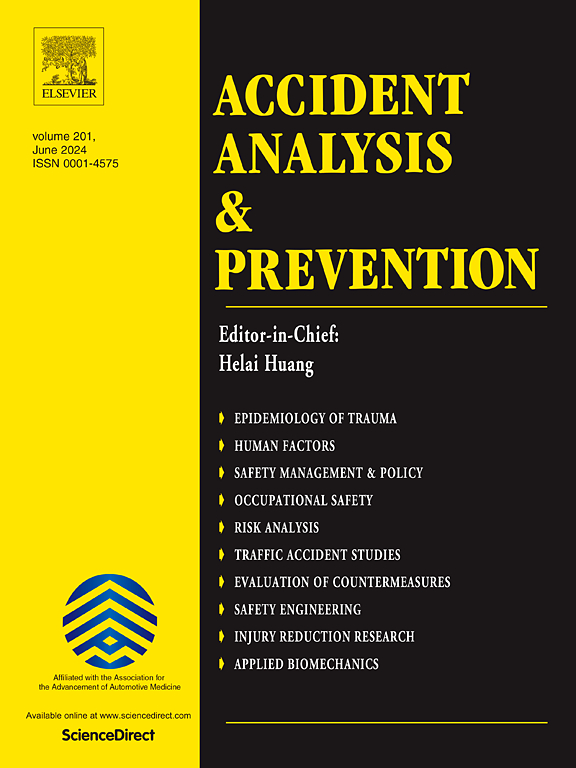Multi-scenario driving style research based on driving behavior pattern extraction
IF 5.7
1区 工程技术
Q1 ERGONOMICS
引用次数: 0
Abstract
Accurately analyzing drivers’ driving styles is crucial for road safety and enhancing intelligent driving systems. However, existing studies have not fully explored the hidden information in driving sequences or considered the influence of driving environments on driving styles. Based on natural driving data from electric vehicles in Wuhan, a framework for driving style analysis based on driving behavior pattern extraction was proposed. Driving sequences were extracted under free-driving and car-following scenarios, where the convergence of driving features was verified using kernel density estimation and relative entropy. A driving propensity indicator based on a dynamic threshold was constructed, and combined with the Hierarchical Dirichlet Process Hidden Semi-Markov Model (HDP-HSMM) and K-means clustering algorithm, 4 and 5 types of driving behavior pattern were extracted under free-driving and car-following scenarios, respectively. Energy consumption distribution was introduced to verify the validity of driving pattern extraction. Jensen–Shannon (JS) divergence was utilized to calculate the difference in the distribution of the driving propensity indicator among different drivers. By quantifying behavioral differences, drivers were categorized into aggressive, moderate, and conservative types. The results show that the statistical characteristics of driving patterns are consistent with the distribution of energy consumption, with the highest energy consumption occurs in aggressive acceleration and high-speed steady-state patterns, and the highest braking energy recovery occurs in aggressive deceleration pattern. Furthermore, the driving environment influences driving styles to certain degree while exhibiting consistent or diverse driving styles in different driving scenarios and patterns.
求助全文
约1分钟内获得全文
求助全文
来源期刊

Accident; analysis and prevention
Multiple-
CiteScore
11.90
自引率
16.90%
发文量
264
审稿时长
48 days
期刊介绍:
Accident Analysis & Prevention provides wide coverage of the general areas relating to accidental injury and damage, including the pre-injury and immediate post-injury phases. Published papers deal with medical, legal, economic, educational, behavioral, theoretical or empirical aspects of transportation accidents, as well as with accidents at other sites. Selected topics within the scope of the Journal may include: studies of human, environmental and vehicular factors influencing the occurrence, type and severity of accidents and injury; the design, implementation and evaluation of countermeasures; biomechanics of impact and human tolerance limits to injury; modelling and statistical analysis of accident data; policy, planning and decision-making in safety.
 求助内容:
求助内容: 应助结果提醒方式:
应助结果提醒方式:


